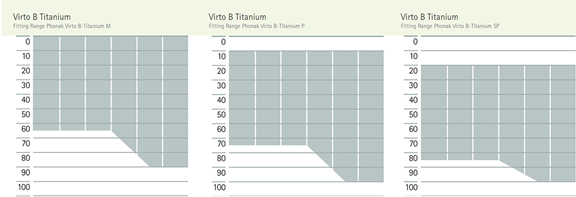At London Hearing we pay close attention to emerging technology in the market as this enables us to be highly selective about the products we recommend to our patients. As an independent supplier, we are committed to this approach and regularly monitor and review our suppliers to ensure they are keeping up with the market too.
Titanium built hearing aids have taken very well with both the Audiology team and our ENT Consultants. But more importantly, these hearing systems have really impressed our patients here at London Hearing and if a product has been well received by our patients, then we know it has a place in our clinic.
Mr Nick Clive – Lead Audiologist and Director at 150 Harley Street – explains more about Phonak Titanium hearing aids, which he believes have a significant advantage over other models.
Phonak Titanium is a long-term investment
As a material, Titanium is 15 times stronger than acrylic in the design of a shell for hearing aid purposes. This means that the hearing aid is robust and long lasting, giving you the peace of mind that your investment is for the long-term.

It is discrete to wear
The Titanium shell has a thickness of 0.2mm, therefore, we can map the micro-electronics into a smaller cavity. This means we are building hearing aids that are smaller and more discreet than ever before!

The aesthetic outcome is naturally important for most patients. In some cases, it will be the deciding factor which enables the device to be worn confidently and more frequently.
Premium and Natural Quality
Aesthetics aside, let’s focus on the sound, as this is the key to the success of any hearing aid.
Phonak (the manufacturer) are insistent that we have to get past the second bend of the ear canal when we take an impression of the ear; these devices sit deep in the canal.
The product is vented, allowing for natural air and sound to flow in to the ear. Due to the titanium material, we can actually use bigger vents than with traditional acrylic devices.
Therefore, in certain cases, we have fitted these hearing systems successfully even with patients who have normal low-frequency hearing, but who won’t wear a post-aural system.
We always discuss with our patients the importance of dual microphones, which we know work so well with receiver in the ear (RIC) hearing systems which sits behind the ear. However, the counter argument to a deep canal hearing system fitting (such as the Titanium), is that when the microphone sits at a sufficient depth in the canal, we are utilising the pinna effect – allowing for a very natural hearing experience.
The Operating System
The engine/brain of the system is called AutoSense OS. It is an automatic algorithm that identifies the exact hearing environment or situation the user is in, and automatically adapts itself to blend the response accordingly.
Hence by adaptively changing features and gain levels, the Titanium maximises speech intelligibility in any environment.
Fitting Criteria
At our practice, we experience challenging cases, but some of the best Titanium fittings we have seen are with conductive losses, in particular Otosclerosis.
We believe that part of the success has been due to the connective properties of Titanium at this increased depth in the ear canal.
In summary, the scope for custom built hearing systems has widened recently and we see the Titanium option as a very credible choice for our patients here at London Hearing.
Available with 3 receiver options to suit hearing losses of all degrees
Moderate / Power / Super Power

For more information about our range of hearing aids, including Titanium options, contact our team for an appointment on 020 3075 3190 or email [email protected].

